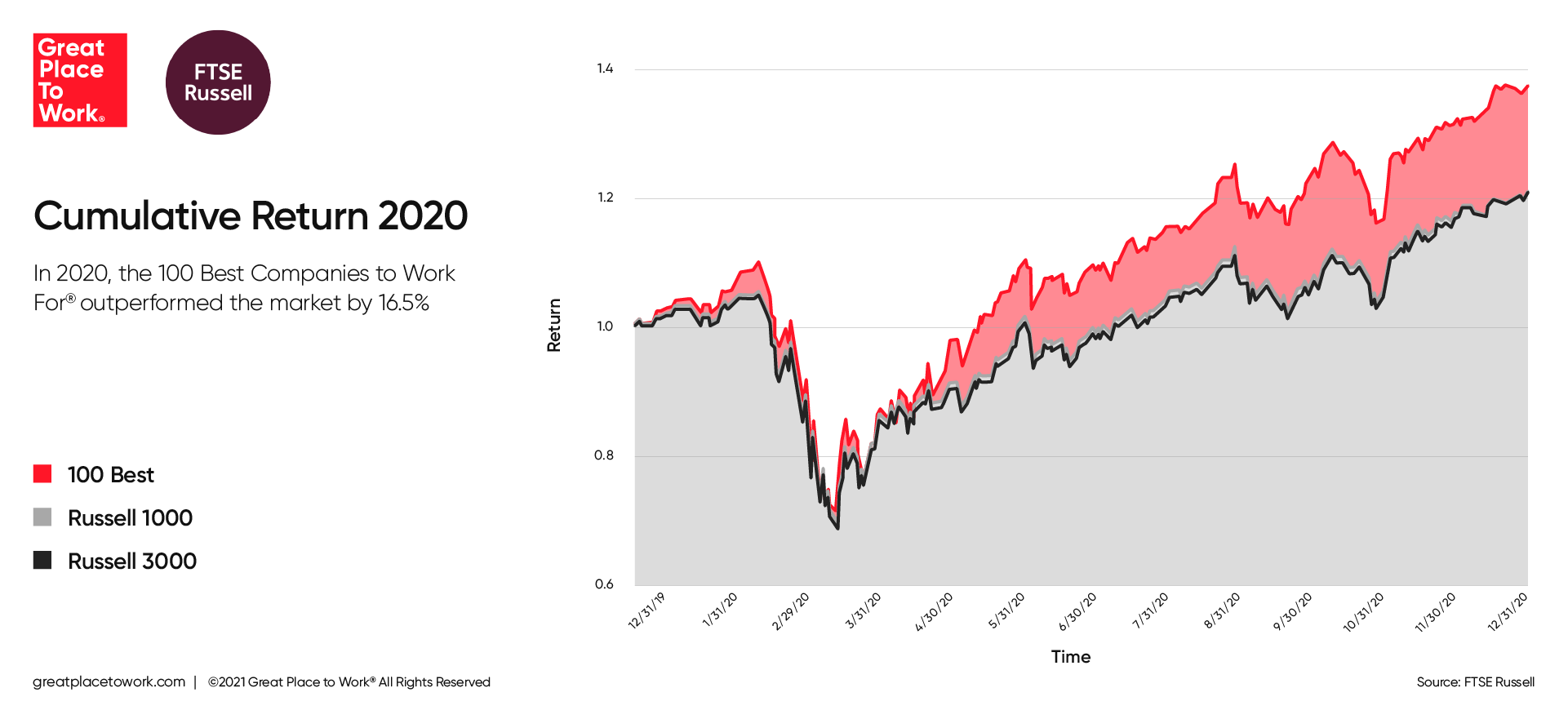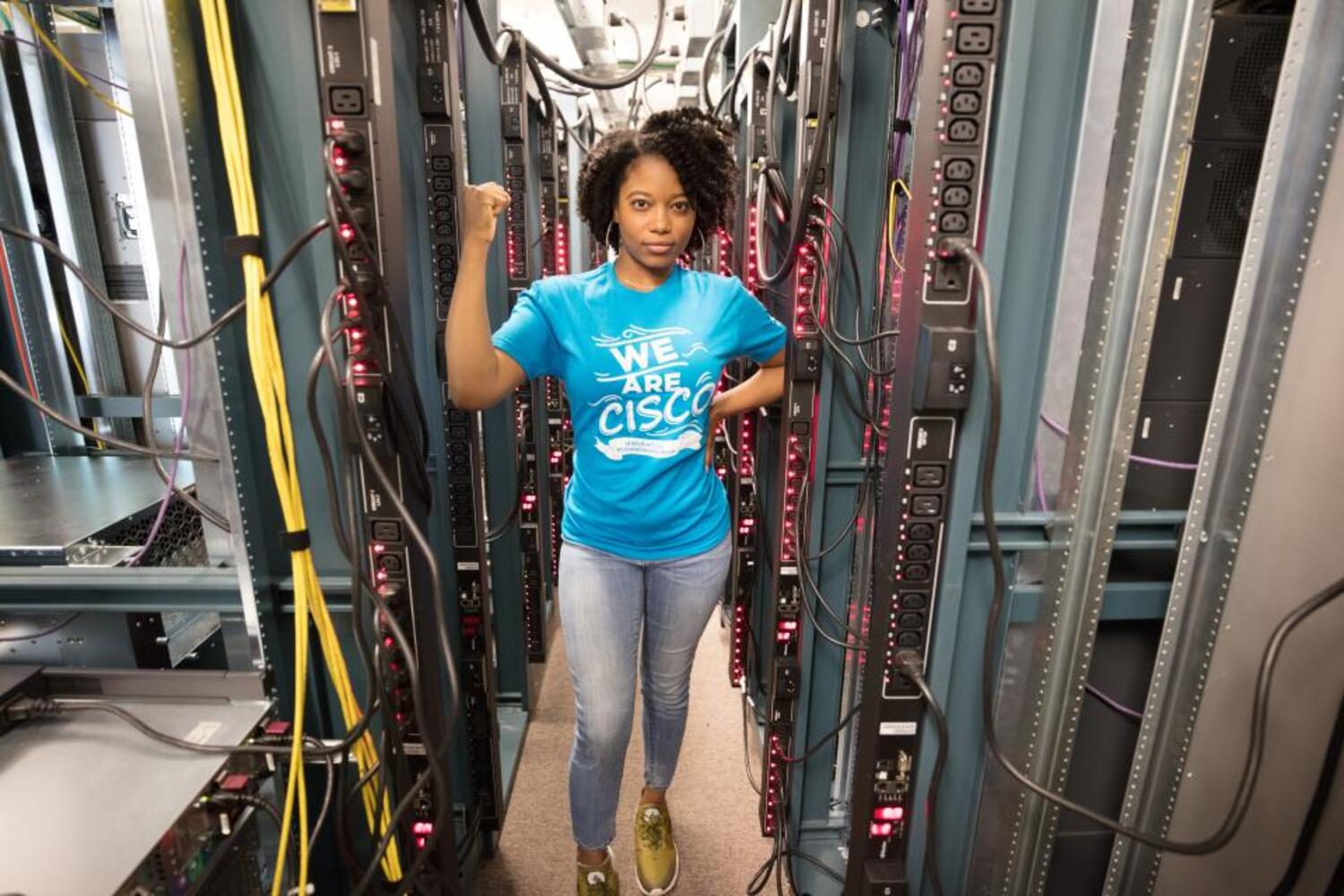Benchmarks & Trends, Benefits of Company Culture, Employee Experience
Here’s how great workplaces in every industry outperform the average in retaining top talent.
The talent wars are far from over.
A new survey suggests that business leaders should remain highly concerned about their talent walking out the door. For a typical U.S. worker considering a job change, workplace culture plays an outsized role in their decision-making.
Great Place To Work® surveyed nearly 4,200 part- and full-time employees aged 18 and older in July of 2022. The results offer a snapshot of the typical workplace experience across seven industries:
- Finance
- Health care
- Hospitality
- Manufacturing
- Professional Services
- Retail
- Technology
While work-life balance has improved for the typical U.S. worker in 2022, plenty of employees are still weighing their options. More than half of employees (55%) in our survey of the typical U.S. workplace said they are willing to leave their job in the next six months.
Here’s a look at the eight top findings from the survey — and what business leaders should consider heading into 2023:
1. Work-life balance improved in 2022.
In a 2021 Great Place To Work market survey of U.S. employees at typical workplaces, 50% said they were encouraged to balance work and life. In 2022, that number jumped to 58%.
The change isn’t so surprising when you consider the investment in employee well-being in the wake of the pandemic.
2. Industry isn’t destiny when it comes to workplace culture.
Every industry faces unique pressures and opportunities to differentiate. Technology companies can more easily offer flexible remote work than health care companies, for instance.
The typical technology company is more likely to offer a positive employee experience. Per the survey, 59% of employees report fair promotion practices, 59% report finding special meaning in their work, and 67% say they want to stay with their company long-term at typical U.S. tech sector workplaces.
That’s a far cry from the experience of the typical U.S. worker in retail, where the average employee has the worst experience of the seven industries surveyed. For these workers, only 43% report fair promotion practices, and only 38% report finding special meaning in their work. The result: Only 44% say they want to stay with their company long-term.
For industries that on average have more healthy workplace cultures, organizations must work hard to compete for top talent. In industries with less positive typical experiences, companies have an opportunity to own the market as an employer of choice.
More than half of employees (55%) in our survey of the typical U.S. workplace said they are willing to leave their job in the next six months.
When compared to the typical U.S. employee, workers at the Best Workplaces™ across 11 industries show that any industry can offer a rewarding and meaningful work environment. For example, Best Workplaces in Retail™ have better scores than all typical U.S. workplaces, regardless of industry.
At these exemplary companies, 77% report fair promotion practices compared to just 43% at a typical retail workplace. More astonishingly, 79% report finding special meaning in their work compared to just 38% at a typical retail organization. It’s a higher number than those at any typical U.S. workplace, including those in industries like tech (59%) and health care (62%).
The data shows that Best Retail companies can compete for talent, even with industries that have a much easier time connecting employees with meaning and purpose.
The data is clear — it’s the company, not the industry that makes a great place to work.
3. Health care organizations should focus on fair pay and promotions.
The typical U.S. health care organization is better than the average typical workplace at offering meaningful work. Where is the biggest gap between the two? Fair pay and promotions.
Only 42% of typical U.S. health care workers report being paid fairly for their work. Similarly, 41% report fair promotion practices.
At the Best Workplaces in Health Care™, the numbers improve dramatically. Seventy-eight percent report being paid fairly for their work, and 81% report fair promotion practices.
Industry, no matter how challenging, is not destiny. Health care companies with high-trust cultures that offer fair pay and equitable promotions outperform others in the health care sector — as well as typical workplaces in any other industry.
4. Meaningful work offers the biggest opportunity for the finance industry.
Only 51% of employees at the typical financial services workplace feel their work has special meaning. At the Best Workplaces in Finance & Insurance™ that jumps to 86%, a change of 35 percentage points.
Meaningful work is an essential piece of the employee experience, and a key predictor of employee retention. Financial services workers at great companies who experience meaningful work are three to four times more likely to stay with their organization over the long term.
The data is clear — it’s the company, not the industry that makes a great place to work.
5. Recruitable employees are overwhelmingly looking for great work culture.
Across industries, employees who are looking for a new job want to find a great workplace culture. Only 2% of recruitable workers say great workplace culture isn’t important for their next role.
Some industries have higher retention risks than others. In a market survey of typical U.S. workers, 64% of retail workers are open to leaving their job. Other industries with high numbers of recruitable workers include hospitality (62%), finance (59%), technology (57%), and manufacturing (51%).
6. Retail workers gain the most by working for a great workplace.
Employees at the typical U.S. workplace in retail are having the least positive experiences on average. But when employees work for a company that made the Best Workplaces in Retail™ list, they are more likely to report meaningful work (41 percentage points higher) and more likely to have a psychologically and emotionally healthy workplace (37 points higher).
The benefits for the business are equally big. Employees at the Best Workplaces in Retail are more willing to help recruit/be brand ambassadors (39 percentage points higher) and employees are more willing to go above and beyond at work (37 points higher). They are also more likely to stay in their job (37 points higher).
7. Hourly, frontline, and Gen Z workers are less likely to experience meaningful work.
Hourly employees are having a very different experience at work than their salaried counterparts.
At the typical U.S. workplace, 49% of hourly workers report that their job has special meaning to them. For salaried workers, that number jumps to 60%.
There’s also a difference on having a psychologically and emotionally healthy workplace. For typical U.S. hourly workers, 48% report a safe and healthy work environment. For salaried employees, that goes up to 58%.
Role level also matters. Individual contributors are having less meaningful experiences than mid-level managers. Fewer workers at the bottom of the organization chart report having meaningful work by 12 percentage points.
Meaningful work is also less prevalent for younger employees. Gen Z finds less meaning than Baby Boomers, with 17 percentage points fewer saying they feel they “make a difference” in their organization.
Across industries, employees who are looking for a new job want to find a great workplace culture. Only 2% of recruitable workers say great workplace culture isn’t important for their next role.
8. Hybrid and remote work has its perks — and risks — for workplace culture.
There are no easy answers when assessing the impact of remote and hybrid work on company culture.
In many ways, remote and hybrid workers are having a better experience than their full-time onsite counterparts. More remote workers (63%) report a healthy work-life balance than do onsite employees (57%). More remote employees also say they and their co-workers go the extra mile on important projects (60% vs. 53% for onsite workers).
Yet, compared to onsite employees, they are having worse experiences when it comes to fair promotions and feeling like they “make a difference.” Only 58% of typical U.S. remote workers feel they make a difference to their organization. For fully onsite workers, 65% feel they make a difference.
While remote workers are less likely to report fair promotions at their organization, more report fair pay in comparison to onsite workers. Half of all onsite employees agree that workers are paid their fair share, compared to 54% of remote workers at typical U.S. workplaces.
Actions to consider
Being a great workplace has unmistakable value for your business — from employee retention to productivity and business outcomes.
There are several actions business leaders should make to get ahead of the competition:
With well-being on the rise, you can’t afford to fall behind. As the average employee experience of well-being improves, the risk of failing to meet employees’ needs only grows. As more employers offer resources for mental, physical, financial, and emotional health, organizations that ignore wellness are more likely to see workers walk out.
Use your work culture to build a competitive advantage. If you have a great workplace culture, now is the time to shout it from the rooftops. Employees are fleeing organizations where they feel unable to thrive. Companies that invest in their workers can recruit top talent from any industry.
Connect every employee with meaningful work. The data is unequivocal about the importance of purpose and meaning in positive workplace experiences. That doesn’t mean purpose trumps pay or basic benefits, but once those baseline needs are met, employees are looking for somewhere they can have an impact.
Identify opportunities and threats amid hybrid work disruption. The remote/hybrid picture is still muddled. Some aspects of remote work offer better outcomes for employees, but in other areas the experience is less positive. Make the extra effort to support workers where they are. Connect remote workers with your brand purpose. For onsite employees, think of innovative ways to offer flexibility.
Subscribe
Subscribe to the Great Place To Work newsletter and learn how to create a high-trust workplace regardless of where, when or how your employees work.











